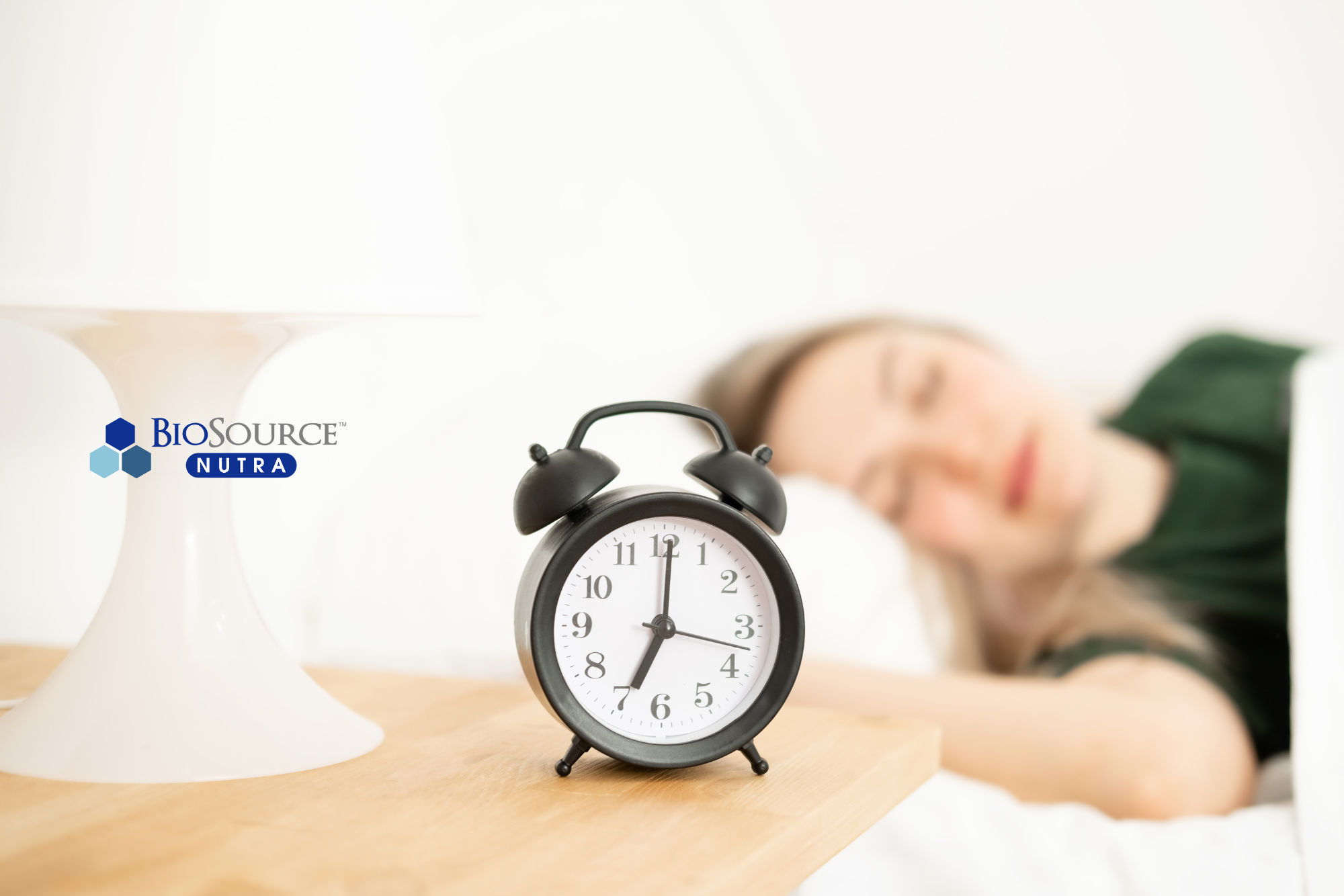How Sunlight Exposure Affects Mood and Mental Well-being

Natural sunlight is an excellent source of vitamin D; it helps regulate serotonin, dopamine, and melatonin. Embracing the benefits of natural sunlight can boost our mental health and well-being.
Welcome to a journey of enlightenment where we explore the radiant connection between sunlight and our mental health. For centuries, sunlight has been celebrated for its life-giving properties, yet its profound impact on mood regulation and emotional well-being is a tale less often told. In this exploration, we delve into the science behind how exposure to natural light influences our mood, touching on the essential roles of neurotransmitters like serotonin and dopamine in this luminous dance of well-being. As we uncover the benefits of basking in the sun's glow, from uplifting spirits to mitigating the shadows of depression and anxiety, we also navigate the challenges of seasonal affective disorder (SAD) and the critical role of sunlight in synchronizing our circadian rhythms. Equipped with actionable tips and mindful strategies, this post aims to empower you to harness the sun's energy for a brighter, more balanced state of mind. Join us as we illuminate the path to emotional resilience, guided by the natural light that surrounds us.
Introduction to Sunlight and Mental Health
The sun, our celestial benefactor, does more than just light our days and nourish the earth—it plays a pivotal role in regulating our mood and mental well-being. The connection between sunlight exposure and mood regulation is both profound and multifaceted, intertwining with the biological and psychological threads that constitute our mental health. At the heart of this connection lies the ability of sunlight to influence the production and release of key neurotransmitters in the brain, notably serotonin and dopamine, which are crucial for feeling happy and balanced.
The Sunlight-Serotonin Link
Serotonin, often referred to as the body's natural “feel-good” chemical, is intrinsically linked to mood regulation. Exposure to natural sunlight can increase serotonin levels in the brain, leading to improved mood, heightened feelings of calm, and a greater sense of focus and calmness. This is because sunlight directly influences serotonin production by triggering the skin's production of vitamin D, which, in turn, plays a key role in serotonin synthesis. The brighter the day, the more serotonin the brain tends to produce, explaining why we often feel more energetic and positive when the sun is shining.
Sunlight and Dopamine
Dopamine, another critical neurotransmitter, is associated with pleasure, motivation, and reward. Sunlight exposure has been shown to boost dopamine levels, contributing to feelings of well-being and happiness. This boost not only uplifts our mood but also helps regulate attention, learning, and emotional responses. The effect of sunlight on dopamine production underscores the biological underpinnings of seasonal patterns in mood and behavior, including changes associated with Seasonal Affective Disorder (SAD).
Together, serotonin and dopamine form a neurochemical duo influenced by sunlight exposure, orchestrating a symphony of mood regulation and emotional well-being. This understanding illuminates the biological basis behind the age-old wisdom that spending time in the sun can lift our spirits and improve our mental health. As we delve deeper into the benefits of sunlight on mood, and how we can harness this natural remedy, we begin to see the light in adopting strategies that allow us to absorb those precious rays, responsibly and effectively.
Benefits of Sunlight on Mood
The golden rays of the sun do more than just chase away the shadows; they have a profound effect on lifting our mood and combatting the symptoms of depression and anxiety. This natural mood enhancer offers a gentle yet powerful means to brighten our mental landscape, providing both immediate and long-term benefits for our emotional well-being.
Boosting Mood with Sunlight
Sunlight exposure initiates a cascade of biological responses that lead to an increase in serotonin and dopamine levels, as discussed earlier. This increase directly contributes to a more positive mood and a sense of calm and focus. Regular exposure to natural light, especially in the morning, can help set a positive tone for the entire day, reducing feelings of depression and anxiety. For individuals experiencing mild to moderate depression, regular sunlight exposure can serve as a complementary therapy, enhancing the effects of other treatments and promoting a more optimistic outlook on life.
Sunlight and Its Psychological Effects
The psychological mechanisms behind sunlight's mood-enhancing effects are multifaceted. On one level, sunlight exposure helps regulate our internal biological clocks, or circadian rhythms, which govern sleep-wake cycles, hormone release, and other physiological processes. Proper regulation of these rhythms is essential for maintaining mental and emotional equilibrium. Disruptions in circadian rhythms have been linked to various mental health issues, including depression and anxiety disorders.
Furthermore, sunlight has a direct effect on reducing the production of melatonin, a hormone that regulates sleep and is produced in greater quantities in the dark. By reducing melatonin production during the day, sunlight helps maintain alertness and vitality, contributing to a more positive mood.
Additionally, the psychological benefits of spending time outdoors, in the sunlight, extend to enhanced creativity, reduced stress through the calming effect of nature, and an increased sense of connection and belonging. This holistic impact of sunlight, combined with physical activity in the great outdoors, amplifies the mood-boosting effects and contributes to overall mental resilience and well-being.
In essence, the benefits of sunlight on mood are a powerful reminder of our intrinsic connection to the natural world. By stepping outside and basking in the sunlight, we not only rejuvenate our body but also uplift our spirits, tapping into the profound healing power of nature to combat depression, anxiety, and stress.
Effects of Sunlight on Seasonal Affective Disorder (SAD)
Seasonal Affective Disorder (SAD) is a type of depression that ebbs and flows with the seasons, typically worsening during the shorter days of fall and winter, when sunlight is scarce. This pattern underscores the crucial link between sunlight exposure and mental health, highlighting how the absence of sufficient natural light can precipitate significant mood disturbances.
The Role of Sunlight in SAD
The reduced level of sunlight in fall and winter may cause a decrease in serotonin levels, contributing to the mood downturns experienced by individuals with SAD. Additionally, the increase in melatonin production due to longer nights can disrupt circadian rhythms, leading to changes in sleep patterns and mood. This combination of decreased serotonin and disrupted circadian rhythms can create a perfect storm for Seasonal Affective Disorder, manifesting in symptoms such as persistent low mood, lethargy, oversleeping, appetite changes, and a loss of pleasure or interest in once enjoyable activities.
Strategies for Managing SAD
Light Therapy: One of the most effective treatments for SAD is light therapy, which involves sitting near a light therapy box that emits bright light mimicking natural sunlight. This exposure can help regulate serotonin and melatonin levels, improving mood and resetting circadian rhythms. Light therapy should be done under the guidance of a healthcare professional to ensure it's used correctly and effectively.
Increase Sunlight Exposure: Making the most of natural sunlight during the shorter days is crucial. This can include spending time outdoors during daylight hours, especially in the morning, and arranging indoor environments to maximize exposure to natural light (e.g., keeping curtains open during the day and sitting near windows).
Stay Active: Engaging in regular physical activity, particularly outdoors, can further bolster mood and mitigate the effects of SAD. Exercise not only provides an additional boost to serotonin levels but also promotes overall physical health.
Maintain a Regular Schedule: Keeping a consistent daily routine, especially regarding sleep and wake times, can help stabilize circadian rhythms and improve mood.
Seek Professional Help: It's important for those suffering from SAD to seek support from mental health professionals, who can provide guidance on the most appropriate treatment strategies, which may include light therapy, medication, counseling, or a combination of approaches.
By understanding the impact of sunlight on Seasonal Affective Disorder and implementing strategies to increase light exposure and manage symptoms, individuals affected by SAD can find relief and enjoy a better quality of life, even during the darker months.

Sunlight plays a role in regulating melatonin, an important part of our circadian rhythms and our sleep-wake cycles.
Sunlight and Circadian Rhythms
Our bodies are governed by circadian rhythms, internal biological clocks that dictate our sleep-wake cycles, hormone release, eating habits, and other bodily functions. These rhythms are significantly influenced by environmental cues, with sunlight being the most powerful external signal affecting our internal timing mechanisms. The presence of natural light during the day helps to keep our circadian rhythms aligned with the Earth's 24-hour day, ensuring that we stay awake and alert during daylight hours and ready for sleep when darkness falls.
The Role of Sunlight
Sunlight exposure, especially in the early morning, signals to our brain that it's time to wake up and start the day. This exposure activates the production of serotonin, contributing to feelings of happiness and well-being, and suppresses melatonin, the hormone responsible for sleepiness, thereby regulating our sleep-wake cycles. As the day turns into night, the absence of sunlight cues the body to increase melatonin production, helping us to wind down and prepare for sleep.
Tips for Optimizing Sunlight Exposure
Morning Light: Make it a habit to seek out sunlight soon after waking up. Even a short walk, enjoying a morning coffee outside, or simply opening the curtains to let natural light flood your indoor spaces can signal your body to suppress melatonin production and boost alertness.
Daytime Workspaces: If possible, position your workspace near a window to benefit from natural daylight throughout the day. This can help maintain your energy levels and focus, and regulate your sleep patterns.
Take Breaks Outdoors: Incorporate short outdoor breaks into your daily routine. Stepping outside for even a few minutes can provide a significant boost to your mood and alertness, thanks to the natural light exposure.
Evening Light Management: As bedtime approaches, reduce exposure to bright lights and blue light from screens, which can interfere with melatonin production. Dimming indoor lights and using blue light filters on electronic devices can help signal to your body that it's time to prepare for sleep.
Consistent Sleep Schedule: Aligning your sleep schedule with the natural light-dark cycle can reinforce your circadian rhythm. Try to wake up and go to bed at the same times every day, even on weekends, to maintain this natural alignment.
By understanding the interplay between sunlight and our circadian rhythms, we can take proactive steps to ensure our exposure to natural light supports our natural sleep-wake cycles. Optimizing our interaction with sunlight not only improves sleep quality but also enhances our overall health and well-being, illuminating the path to a balanced and harmonious lifestyle.

Working, eating, and playing by an open window are some examples of safely maximizing your sunlight intake.
Tips for Maximizing Sunlight Benefits
Harnessing the power of sunlight is crucial for our physical and mental health. Yet, modern lifestyles often confine us indoors, limiting our exposure to natural light. Here are actionable tips to ensure you soak up enough sunshine, even with a busy schedule or during shorter daylight hours.
Integrating Sunlight into Daily Routines
Morning Sunshine: Begin your day by opening curtains and blinds as soon as you wake up. If possible, enjoy your breakfast near a source of natural light. This early exposure helps halt melatonin production and kickstarts your circadian rhythm, setting a positive tone for the day.
Work Near Windows: Position your work or study area close to windows. Natural light can boost your mood and productivity. If you're in an office without windows, try to step outside during breaks or opt for a walk-and-talk meeting.
Mirror the Light: Use mirrors strategically to reflect sunlight into darker areas of your home or office. Placing mirrors opposite windows can brighten spaces, enhancing the effects of limited sunlight.
Sunlight-Enriched Activities and Exercises
Walking or Jogging: A morning walk or jog in sunlight can double as exercise and a natural mood booster. It's an excellent way to start the day with energy and clarity.
Outdoor Workouts: Take your exercise routine outdoors whenever possible. Yoga, stretching, or bodyweight exercises in a park or garden can be invigorating and provide a new perspective compared to indoor workouts.
Gardening: Gardening is not only therapeutic but also an effective way to enjoy sunlight. It engages your body and mind, offering a sense of accomplishment as you nurture life and beauty.
Lunch Breaks Outdoors: Utilize your lunch breaks to absorb daylight. Eating outside or taking a brief walk in the sun can significantly impact your vitamin D levels and mental health.
Embracing Sunlight with Limited Outdoor Time
Plan for Sunlight: Look at your weekly schedule and identify slots for outdoor time, even if brief. Early morning or late afternoon are ideal times to enjoy the sun without the risk of harsh exposure.
Combine Activities: Combine sunlight exposure with other daily tasks. For instance, listen to audiobooks or make phone calls while you're outside, making the most of your time.
Utilize Weekends: Make outdoor activities a central part of your weekends. Exploring local parks, hiking trails, or simply strolling through your neighborhood can increase your sunlight exposure while offering a refreshing break from the workweek.
By weaving these sunlight-maximizing tips into your daily life, you can enhance your mood, boost your vitamin D levels, and promote a healthier circadian rhythm. Even small adjustments to increase sunlight exposure can lead to significant benefits for your mental and physical well-being.
Sun Safety and Moderation
While the benefits of sunlight for mental and physical health are well-documented, it's crucial to approach sun exposure with mindfulness and caution. The sun's ultraviolet (UV) rays, while beneficial in moderation, can cause skin damage, sunburn, and increase the risk of skin cancer with excessive exposure. Here, we provide essential guidelines for safely enjoying the sun, ensuring that we protect our skin and health in the pursuit of sunlight's mood-boosting and health-enhancing effects.
Essential Sun Safety Practices
Use Sunscreen: Apply a broad-spectrum sunscreen with an SPF of 30 or higher to all exposed skin, even on cloudy days. Sunscreen should be reapplied every two hours, or more frequently if swimming or sweating.
Seek Shade: Especially during the sun's peak hours (10 a.m. to 4 p.m.), seek shade under trees, umbrellas, or shelters when the UV rays are strongest. Even when in the shade, wearing sunscreen is recommended as UV rays can reflect off surfaces like water and sand.
Wear Protective Clothing: Long-sleeved shirts, pants, wide-brimmed hats, and sunglasses can provide an additional layer of protection against the sun's harmful rays. Today, many fabrics offer UV protection while remaining light and comfortable for outdoor activities.
Balancing Sunlight Benefits with Skin Protection
Timing Is Key: Aim to spend time outdoors in the early morning or late afternoon when the sun's rays are less intense. This timing allows you to enjoy the benefits of natural light while minimizing the risk of skin damage.
Vitamin D and Sun Exposure: While sunlight is a primary source of vitamin D, it's possible to maintain adequate levels through a balanced diet and supplements, if necessary. This approach can be especially beneficial for individuals with a high risk of skin cancer or those living in areas with intense sunlight.
Listen to Your Skin: Pay attention to your skin's response to sun exposure. Redness, discomfort, or changes in skin moles or marks are signs that it's time to seek shade or consult a dermatologist. Regular skin check-ups can help catch any issues early.
Embracing a Healthy Relationship with the Sun
Cultivating a healthy relationship with the sun means enjoying its benefits while respecting its power. By implementing these sun safety practices, we can protect our skin and health, ensuring that our pursuit of sunlight's positive effects on mood and well-being is both safe and sustainable.
As we've journeyed through the illuminating benefits of sunlight on our mood, mental well-being, and the essential practices of sun safety, it's clear that the sun plays a pivotal role in our lives far beyond the light of day. Now, we turn the spotlight to you, our readers, to share your experiences and insights. How has sunlight exposure influenced your mental health? What strategies have you found effective in balancing the benefits of sunlight with the need for protection? Join the conversation in the comments below or connect with our vibrant community in the VIP Facebook Group. For those seeking deeper exploration or facing challenges with mood and mental health, we encourage you to delve into related resources or consult with a health professional. Together, let's harness the power of the sun to illuminate our paths to well-being, fostering a community of support and shared wisdom on our journey toward emotional and physical health.
For more information on healthy lifestyles, check out these articles:
Spring Into Action: Cultivate a Healthy Lifestyle This Season
Stress Less, Live More: The Power of Mindfulness in Cultivating Well-being
Sunshine Workouts: Harnessing the Power of Sunlight for Optimal Health and Fitness
